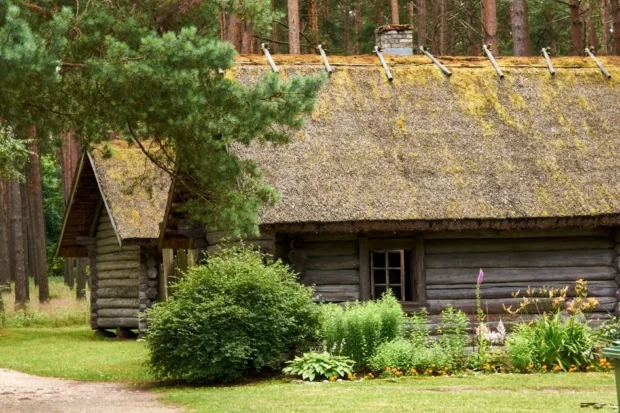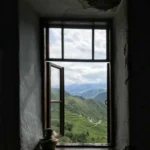Riga Latvia is a city that welcomes all who wander its cobbled roads, listen to its church bells, and taste its rich traditions. Nestled on the Baltic Sea, it blends old and new, history and life, in surprising ways that charm visitors from near and far. For those curious about a place where medieval walls meet lively markets and where wooden houses tell stories of centuries past, Riga offers a fresh chapter to unfold. Let’s stroll together and peek behind its facades, from famous sights to quiet corners only locals may know.
Table of Contents
Walking Through The Heart Of Riga Old Town
The Old Town is where Riga’s soul beats strongest. Narrow streets paved with stones curve past colorful buildings crowned with spires. The House of the Blackheads stands proud, its red brick walls recalling the medieval guild of unmarried German merchants who met here. This spot is not just a postcard scene but a living chapter of Riga’s history. Nearby, the towering St. Peter’s Church invites visitors to climb a steep tower for views of the city’s rooftops and the winding Daugava River.

An interesting fact is that St. Peter’s Church was destroyed multiple times during wars and fires, but locals always rebuilt it, showing their deep love for this landmark. Don’t rush; pause at the square to watch street artists and enjoy the soft accordion music drifting through the air-sometimes it feels like stepping into a different time.
Hidden Corners And Quiet Secrets Far From Crowds
While many tourists flock around the Old Town’s main squares, a short walk leads to quieter treasures. The Latvian National Opera House, with its elegant white facade and grand columns, is a place for lovers of music and culture. But just behind it lies the small and charming Bastejkalna Park. Here, locals stroll beside serene canals, framed by lush trees and blooming flowers. The park’s bridges and sculptures make perfect spots for photos or a peaceful moment.

One quirky secret many miss is the Cat House, a small building with two cat statues standing on its roof, tails arched and eyes piercing. Legend says the cats were placed to face away from the Great Guild House as a silent protest. Whether true or not, this tale adds humor and mystery to Riga’s architectural landscape.
Where To Stay In Riga For Easy City Access
Choosing a place to stay in Riga is a joy because many areas connect well to major sites. To truly feel the city’s pulse, try lodging near the Old Town or the nearby Central Market. The market itself, set in old Zeppelin hangars, is a wonder not only for food lovers but also for anyone curious about daily life here. Vendors sell fresh fish, rye bread, smoked meats, and a colorful array of local fruits and vegetables. Staying close means easy morning walks to taste Latvian rye bread or sample smoked fish right from the source.

Alternatively, neighborhoods along the Daugava River offer calm and scenic views. A short tram ride can bring you to the city center, making your visit both peaceful and practical. Riga’s public transport runs often, and the airport bus connects to the city center in about 30 minutes, a fast and budget-friendly way to arrive or leave.
Taste Latvia Through Riga’s Food And Flavors
Eating in Riga is a delight for those eager to try something new yet comforting. Traditional dishes like grey peas with bacon, rye bread soup, and smoked fish appear on many menus. The Central Market or small cafés in the Latvian Quarter serve hearty meals perfect for cold days. Don’t be afraid to try the local honey cakes or black bread with butter and cheese, a simple but satisfying snack.

One district famous for its food scene is Āgenskalns, just across the river from Old Town. It mixes old wooden houses with modern cafés that serve both international fare and Latvian specialties. Sitting in a cozy spot here, you might overhear locals discussing folk music festivals or their favorite recipes passed down through generations-a taste of culture as rich as the food.
Understanding Riga’s Culture And Customs Kindly
Meeting Riga’s people brings warmth beyond the city’s crisp air. They value politeness and quiet respect. When greeting, a firm handshake and direct eye contact are common. At home or in small shops, removing your shoes is polite, showing respect for cleanliness. And while Latvians can seem reserved at first, a smile or a compliment about their city often melts barriers quickly.

Keep in mind, public behavior is calm; speaking loudly or rushing can feel out of place. Queues form patiently without fuss. At festivals and events, traditional folk music and dances reveal the deep roots of Latvian identity, often surprising visitors with their joyful energy.
Transport Tips To Make Moving Safe And Easy
Getting to Riga’s city center from the airport is simple and affordable by public bus, which runs frequently and drops you near Old Town. Within the city, trams, buses, and trolleybuses cover most destinations. Tickets must be bought before boarding at kiosks or using mobile apps-avoid fines by always validating your ticket once inside.

Walking is often the best way to see the center, as many streets are pedestrian-only or have limited car traffic. For longer trips, especially evenings, planning ahead with schedules helps since public transport quiets down around midnight.
To extend your Baltic experience beyond Riga, exploring Vilnius’ unique charms reveals a city rich in history and warm local culture.
Memories From A Stroll Along The Daugava River
One afternoon, I wandered along the Daugava River bank as the sun set behind the Freedom Monument, a tall statue honoring Latvia’s independence. Fishermen cast lines quietly, their small boats bobbing gently. Children played in parks nearby, laughter carried on the breeze. At that moment, Riga felt like a city where past struggles and future hopes meet in calm harmony.

This river connects Riga not just geographically but also through centuries of trade and culture. Watching the water flow, I thought about how many travelers, merchants, and locals have stood here before me, sharing this very view.
Riga Latvia offers more than landmarks-it offers moments to feel history, taste tradition, and meet a community proud of its heritage. From the spirited sounds in the markets to the silent watch of cat statues perched above, this city invites you to pause, observe, and join its ongoing story.


Eastern Europe travel specialist uncovering hidden gems from the Baltics to the Balkans.
- House of Blackheads and St. Peter's Church Tower, Riga, Latvia – Diliff by Diliff on Wikimedia Commons – cc by-sa 3.0
- Old Riga Vecrīga Town Hall by PIERRE ANDRE LECLERCQ on Wikimedia Commons – cc by-sa 4.0
- German zeppelin hangars, now Riga Central Market (23409045760) by Jorge Láscar from Melbourne, Australia on Wikimedia Commons – cc by 2.0
- House of Blackheads – Riga by Nigel Swales derivative work: MrPanyGoff on Wikimedia Commons – cc by-sa 2.0
- Freedom Monument (Brivibas Piemineklis) by PIERRE ANDRE LECLERCQ on Wikimedia Commons – cc by-sa 4.0
- St. Peter's Church facade, Riga, Latvia – Diliff by Diliff on Wikimedia Commons – cc by-sa 3.0
- Latvian National Opera House – Riga by Haydn Blackey on Wikimedia Commons – cc by-sa 2.0
- Riga – The museum of occupation – Okupācijas muzejs – panoramio by giggel on Wikimedia Commons – cc by 3.0
- Brīvdabas muzejs by Amuizni1 on Wikimedia Commons – cc by-sa 4.0
